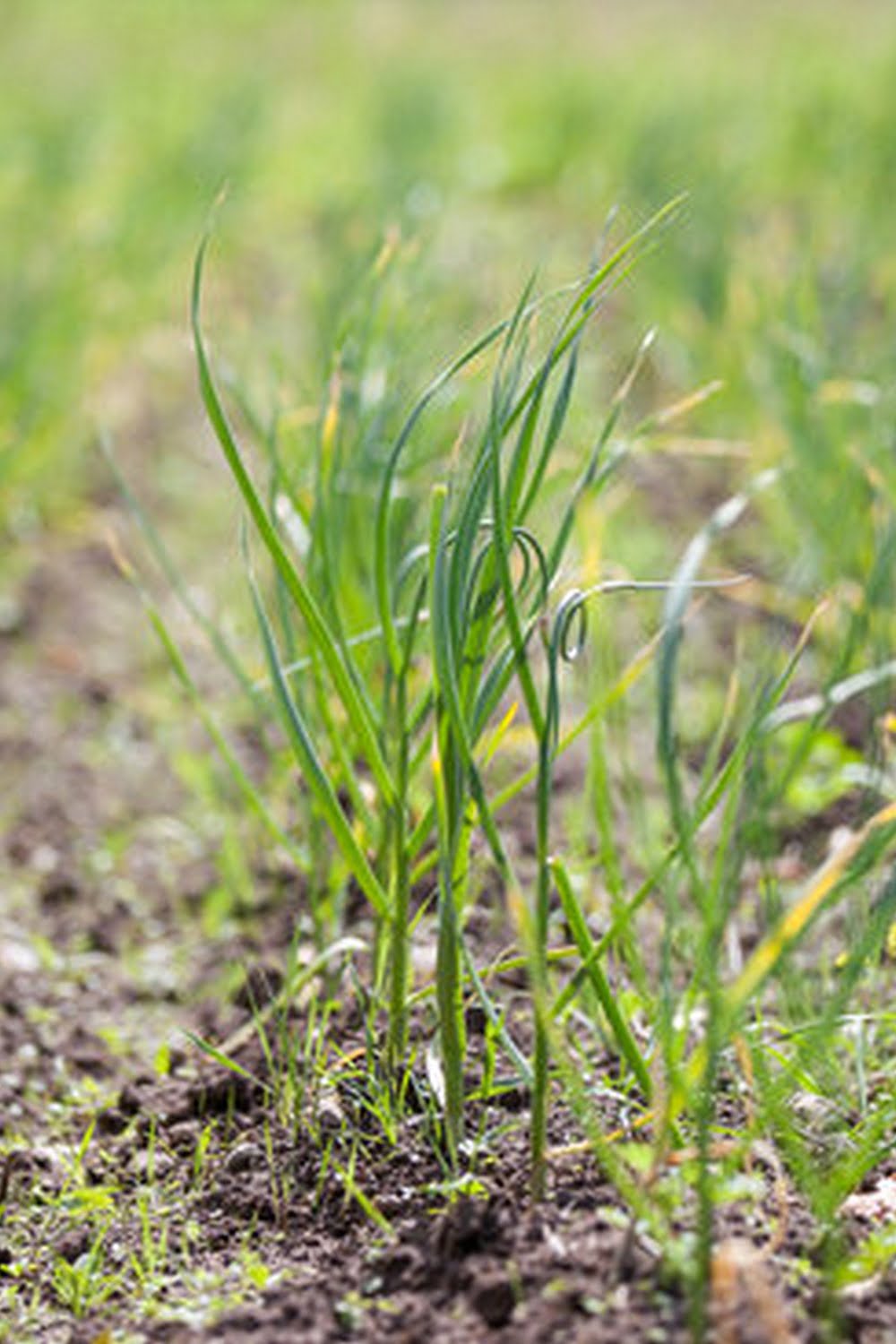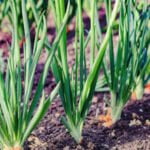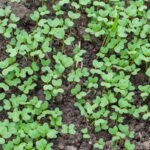Are you interested in creating a thriving indoor vegetable garden system right in the comfort of your own home? Indoor home gardening has become increasingly popular among both seasoned gardeners and those new to the world of horticulture. In this comprehensive guide, we will explore everything you need to know about starting and maintaining a successful indoor vegetable garden.
Whether you are limited on outdoor space or simply want to have fresh produce available year-round, indoor home gardening provides a convenient and rewarding solution. By utilizing the proper tools and techniques, you can cultivate a bountiful harvest of delicious vegetables right in your own living space. From choosing the right system to troubleshooting common issues, this guide will cover all aspects of indoor home gardening for beginners and experienced gardeners alike.
Throughout this article, we will discuss the numerous benefits of growing a vegetable garden indoors, provide tips for selecting the best vegetables to grow, offer maintenance and care suggestions, and much more. Additionally, we will provide resources for additional information and support as you embark on your indoor gardening journey. So let’s dive into the world of indoor home gardening and explore the possibilities of creating your very own thriving indoor vegetable garden system.
Benefits of Growing a Vegetable Garden in Your Home
Growing a vegetable garden in your home can provide numerous benefits for both you and your family. One of the main advantages is the ability to have access to fresh, organic produce right at your fingertips. By having an indoor vegetable garden system, you can ensure that the fruits and vegetables you consume are free from harmful pesticides and chemicals, promoting better health and well-being for you and your loved ones.
In addition to the health benefits, growing a vegetable garden indoors can also be a cost-effective way to supplement your grocery shopping. With the rising prices of organic produce in supermarkets, having your own indoor vegetable garden system allows you to save money while still enjoying high-quality, nutritious food.
Furthermore, indoor home gardening provides a sense of satisfaction and fulfillment as you witness the growth and development of your plants. This hands-on experience not only promotes a greater appreciation for nature but also serves as a therapeutic and relaxing activity. So if you’re looking for a rewarding hobby that brings joy and nourishment into your home, consider starting an indoor vegetable garden today.
Overall, by incorporating an indoor vegetable garden system into your home, you can reap the benefits of convenient access to fresh produce, cost savings on groceries, and the joy of nurturing living plants. Whether you have limited outdoor space or simply prefer the convenience of growing food indoors, having a vegetable garden in your home can truly enhance your overall well-being.
Choosing the Right Indoor Vegetable Garden System
When it comes to indoor home gardening, choosing the right indoor vegetable garden system is crucial for the success of your plants. There are several options available, each with its own advantages and considerations.
Hydroponic Systems
Hydroponic systems are a popular choice for indoor vegetable gardening. These systems allow plants to grow in a nutrient-rich water solution without the use of soil. They are efficient in space utilization and can result in faster plant growth.
Aquaponic Systems
Aquaponic systems combine hydroponics with aquaculture, where plants are grown using the waste from fish. This sustainable method is environmentally friendly and can produce both vegetables and fish in a single system.
Container Gardening
For those who prefer a more traditional approach, container gardening is a great option for indoor vegetable gardening. Using containers allows for flexibility in terms of plant varieties and can easily be adjusted to fit any indoor space.
In choosing the right indoor vegetable garden system, it’s important to consider factors such as available space, maintenance requirements, and personal preferences. By selecting the best system for your needs, you can create a thriving indoor garden that provides fresh and healthy produce all year round.
Setting Up Your Indoor Garden Space
When it comes to setting up your indoor garden space, there are a few key factors to consider in order to create the ideal environment for your plants to thrive. Here are some important steps and tips for getting started:
1. Location: Choose a well-lit area in your home where your indoor vegetable garden system can receive adequate sunlight or artificial light. South-facing windows are generally the best option for natural light, but if that’s not available, consider investing in grow lights.
2. Containers: Select the appropriate containers for your plants, making sure they have good drainage. This could be pots, grow bags, or even hydroponic systems depending on the type of vegetables you plan to grow.
3. Climate Control: Keep in mind that indoor environments can vary in temperature and humidity. Consider using a small fan for air circulation and a humidifier if needed to maintain optimal growing conditions for your plants.
4. Vertical Space: If you’re limited on floor space, think about utilizing vertical space by installing shelves or hanging planters to maximize the number of plants you can grow in your indoor garden.
By taking these factors into account and carefully planning out your indoor garden space, you can create an environment that promotes healthy growth and yields a bountiful harvest of fresh vegetables right from the comfort of your own home.
Remember that with proper planning, attention to detail, and regular maintenance, you can create a thriving indoor vegetable garden that not only adds beauty to your living space but also provides you with fresh and nutritious produce throughout the year.
Essential Tools and Supplies for Indoor Gardening
When embarking on your indoor home gardening journey, it is essential to equip yourself with the right tools and supplies to ensure the success of your vegetable garden. Here are some key items you will need to set up and maintain your indoor vegetable garden system.
Containers and Pots
Choosing the right containers and pots for your indoor vegetable garden is crucial. Look for containers that have good drainage to prevent waterlogging, as well as pots that are the appropriate size for the vegetables you want to grow. Make sure they are made of non-toxic materials and are suitable for indoor use.
Grow Lights
Since natural sunlight may be limited indoors, investing in grow lights is important for the healthy growth of your vegetables. LED grow lights are energy-efficient and provide the necessary spectrum of light for plants to thrive. Position them at the correct distance from your plants according to their specific light requirements.
Soil and Fertilizer
High-quality potting soil that is well-draining and rich in nutrients is essential for indoor gardening. Look for soil mixes specifically formulated for container gardening. Additionally, consider using organic fertilizers or compost to nourish your plants without synthetic chemicals.
Watering Cans or Spray Bottles
Proper hydration is key to the success of your indoor vegetable garden. Invest in a watering can with a narrow spout or spray bottles to deliver water directly to the plant’s roots without creating a mess. This will help prevent overwatering and ensure even distribution of moisture.
By ensuring that you have these essential tools and supplies on hand, you can create an optimal environment for your indoor vegetable garden system, setting yourself up for a successful harvest of fresh, homegrown produce all year round.
Selecting the Best Vegetables to Grow Indoors
When it comes to choosing the best vegetables to grow indoors, it’s important to consider factors such as space, lighting, and time to maturity. Some vegetables are better suited for indoor growing than others due to their adaptability to different conditions and limited space. Here are some of the best vegetables to consider for your indoor vegetable garden system:
1. Leafy greens – These include lettuce, spinach, kale, and arugula. They are ideal for indoor growing because they thrive in containers and don’t require a lot of space. They also have a relatively short time to maturity, making them perfect for harvesting within a few weeks.
2. Tomatoes – While they do require more space and sunlight compared to leafy greens, there are compact varieties of tomatoes that can be grown in pots or hanging baskets indoors. With proper care and support, you can enjoy fresh tomatoes from your indoor garden.
3. Peppers – Bell peppers and chili peppers can also be grown indoors, especially in sunny windowsills or under grow lights. They add color and flavor to your dishes and can be quite rewarding when harvested at the peak of ripeness.
In addition to these vegetables, herbs such as basil, parsley, cilantro, and chives are also excellent choices for indoor gardening. They not only enhance the flavor of your meals but also have ornamental value with their lush foliage. With the right selection of vegetables and herbs, you can create a thriving indoor home garden that provides an abundance of fresh produce year-round.
| Vegetable | Indoor Growing Considerations |
|---|---|
| Leafy Greens (lettuce, spinach, kale) | Well-suited for containers with short time to maturity |
| Tomatoes | Compact varieties available; need ample sunlight |
| Peppers (bell peppers, chili peppers) | Suitable for sunny windowsills or under grow lights |
Maintenance and Care Tips for Your Indoor Vegetable Garden
Once you have set up your indoor vegetable garden system, it’s important to maintain and care for it properly to ensure a successful harvest. Here are some tips to help you keep your indoor garden healthy and thriving:
1. Watering: Proper watering is crucial for the health of your indoor garden. Be sure to water your plants consistently, but be mindful not to overwater them. Use a watering can with a fine spout to water the soil directly without splashing the leaves.
2. Lighting: Since natural sunlight may be limited indoors, providing adequate lighting is essential for the growth of your indoor vegetables. Consider using grow lights or fluorescent lights specifically designed for plants to ensure they receive the necessary light for photosynthesis.
3. Temperature and Humidity: Maintaining the right temperature and humidity levels in your indoor garden space is vital for plant growth. Keep the temperature between 65-75°F during the day and slightly cooler at night. Use a humidifier if needed, especially during the drier months.
In addition to these tips, it’s important to regularly inspect your plants for any signs of pests or diseases. Apply organic pesticides or insecticidal soaps as needed, and remove any damaged leaves or dead foliage promptly to prevent the spread of disease.
| Maintenance Tips | Care Tips |
|---|---|
| Proper watering | Regularly inspect plants |
| Provide adequate lighting | Apply organic pesticides if needed |
| Maintain temperature and humidity levels | Remove damaged leaves promptly |
Harvesting and Enjoying the Fruits of Your Indoor Garden
After putting in the hard work of setting up and maintaining your indoor vegetable garden system, it’s time to reap the rewards of your efforts. Harvesting fresh, home-grown vegetables is not only satisfying, but it also allows you to enjoy the delicious flavors and nutritional benefits of produce that you’ve grown yourself.
When it comes to harvesting your indoor vegetables, it’s important to do so at the right time to ensure optimal flavor and quality. Different vegetables have different indicators that they are ready for harvest, such as color, size, or texture. Be sure to research each vegetable you are growing to understand how to tell when it is ready to be picked.
Once you have harvested your home-grown vegetables, it’s time to enjoy them in a variety of ways. Whether you decide to eat them fresh or incorporate them into your favorite recipes, there’s nothing quite like the taste of freshly harvested produce. Not only will you be able to savor the flavors of your indoor garden, but you’ll also benefit from the nutritious value of vegetables that have been grown organically and harvested at their peak ripeness.
As you continue with your indoor home gardening journey, remember that harvesting is just one part of the process. The joy and satisfaction derived from enjoying the fruits of your labor will continue to motivate you as you maintain and care for your indoor vegetable garden system in the future.
Troubleshooting Common Issues in Indoor Home Gardening
As much as indoor home gardening can be a rewarding and enjoyable activity, it is not without its challenges. Whether you are a novice or experienced gardener, you may encounter some common issues when growing vegetables in your home. Here are some troubleshooting tips to help you address and overcome these challenges:
1. Overwatering: One of the most common issues with indoor gardening is overwatering your plants. This can lead to root rot and other diseases. To avoid overwatering, ensure that your pots have proper drainage, use a moisture meter to determine when to water, and only water when the top inch of soil is dry.
2. Insufficient light: Many indoor vegetable garden systems rely on artificial light sources, which may not always provide enough light for optimal plant growth. If you notice your plants becoming leggy or pale in color, consider adding supplemental grow lights or placing your garden near a south-facing window.
3. Pests and diseases: Even indoors, plants can still fall victim to pests such as aphids, spider mites, or whiteflies, as well as diseases like powdery mildew. Regularly inspect your plants for signs of infestation or illness, and use organic pest control methods if necessary.
4. Nutrient deficiencies: Indoor plants may also suffer from nutrient deficiencies if they are not receiving the proper balance of nutrients from the soil or fertilizer. Consider using a balanced fertilizer specifically formulated for indoor vegetable gardens to ensure that your plants are getting the nutrients they need.
5. Temperature and humidity control: Variations in temperature and low humidity levels can also impact the health of your indoor vegetable garden. Aim to keep the temperature between 65-75°F during the day and slightly cooler at night, while also providing adequate humidity through methods such as misting or using a humidifier.
By being proactive and addressing these common issues in indoor home gardening, you can ensure that your vegetable garden thrives and yields bountiful harvests for you to enjoy.
Resources for Additional Indoor Gardening Information and Support
In conclusion, indoor home gardening with an indoor vegetable garden system can be a rewarding and fulfilling experience. Not only does it provide fresh and organic produce for you and your family, but it also offers numerous health, environmental, and mental benefits. Growing your own vegetables at home allows you to have full control over what goes into your food, reduces your carbon footprint by minimizing transportation emissions, and provides a therapeutic and stress-relieving hobby.
When choosing the right indoor vegetable garden system, it’s essential to consider factors such as space availability, budget, the type of vegetables you want to grow, and your level of gardening expertise. Whether you opt for hydroponic systems, container gardens, or vertical setups, there are countless options to suit your needs and preferences.
As you embark on this indoor gardening journey, remember that patience and dedication are key. Learning how to set up and maintain your garden space properly while providing the right care will yield a bountiful harvest of delicious homegrown vegetables.
And in times of difficulty or confusion, don’t hesitate to seek additional information and support from reputable resources dedicated to indoor gardening. With the right knowledge and guidance under your belt, your indoor vegetable garden will flourish like never before.
Frequently Asked Questions
What Vegetables Grow Best in Indoor Gardens?
Some vegetables that grow best in indoor gardens include leafy greens like lettuce, spinach, and kale. Herbs such as basil, cilantro, and parsley also thrive in indoor environments. Root vegetables like radishes and carrots can also be grown indoors.
Is an Indoor Vegetable Garden Worth It?
An indoor vegetable garden can be worth it for individuals who want fresh produce year-round or those with limited outdoor space. While it may require an initial investment in equipment and supplies, the convenience of having homegrown vegetables can make it worthwhile for many people.
What Is the Best Indoor Garden System for Tomatoes?
The best indoor garden system for tomatoes is one that provides adequate support for the plants to grow vertically, sufficient light exposure, proper ventilation, and consistent watering. Hydroponic systems or self-watering containers are popular options for growing tomatoes indoors.

If you’re looking to get into vegetable gardening, or are just looking for some tips on how to make your current garden better, then you’ve come to the right place! My name is Ethel and I have been gardening for years. In this blog, I’m going to share with you some of my best tips on how to create a successful vegetable garden.





